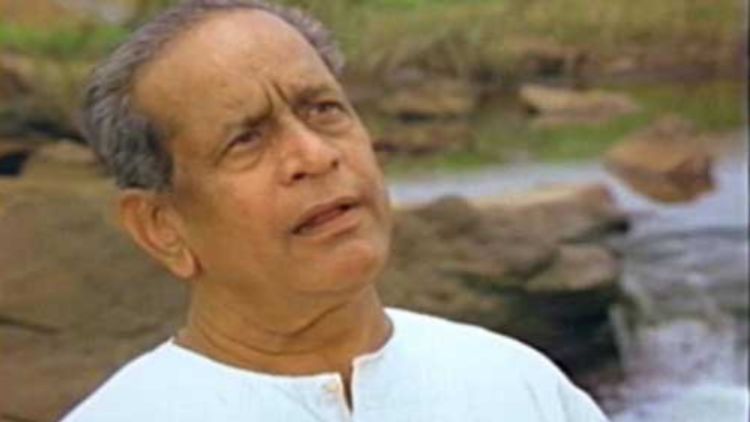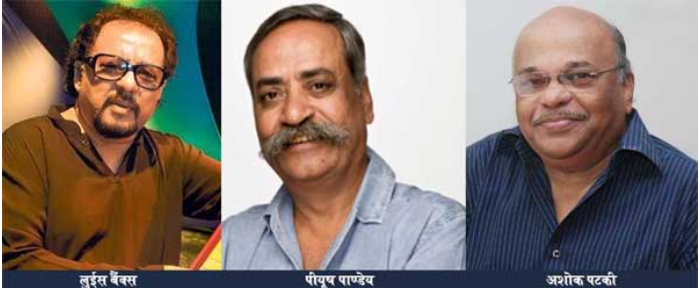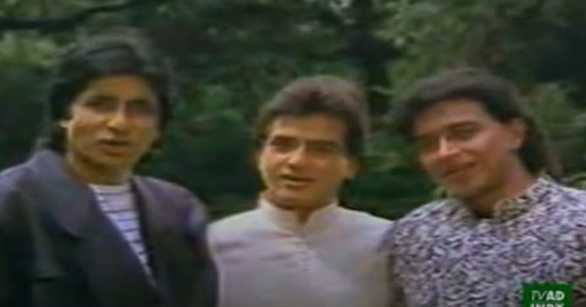
Manjit Thakur / New Delhi
The late eighties was a period of power shortages in India. Television – mostly black and white – was the major source of family entertainment. In most families, the task of ensuring the battery for the television set to remain charged so that ut functions even without electric supply was entrusted to the most dependable young man in the family.
Those days Doordarshan was the major channel and it played a special short film right before airing a program. The film based on a song was enough to fill the hearts and minds of everyone with patriotism and a sense of pride in India’s diversity. The song celebrated India and Indiansness and became a scult song, an unofficial national anthem: Mile Sur Mera Tumhara..
The song played out with the sun rising in the golden horizon and merging in the ocean waves to be followed by a waterfall and the accompanying heavyset voice of Maestro Pandit Bhimsen Joshi who is practicing Rag Bhairavi in the backdrop of a waterfall.
Pandit Bhimsen Joshi's son Jayant Joshi once said in an interview, "The then Prime Minister Rajiv Gandhi wanted a song on national unity. This idea was forwarded to my father Pandit Bhimsen Joshi and the result is this composition.”
In fact, Doordarshan had asked the late Suresh Mallik to produce a song on the orders of the PM for August 15, 1988. It was a challenging assignment yet it launched Mallik into a long journey of creativity.
Mallik started with the idea of bringing together various streams of Indian music. He wanted to make a musical film that could become a national song. But it was not easy to mix modern music with Hindustani and Carnatic music; and with popular and traditional genres. Mallik wanted to cover 13 languages and regions in one film and produce a song that would be a treat to the eyes and ears.
On the advice of Pandit Bhimsen Joshi, he chose Raga Bhairavi, considered a complete Raga, as its base. Mallik had meetings with many known lyricists. He even discussed the project with his young accounts manager. Finally, after reviewing 17 ideas, he got the right lyrics.
This young manager was Piyush Pandey, who, later, became a famous name in the advertising world.
Thereafter he had to choose music for the song. Mallik sought help of two young talents Lewis Banks and the late P Vaidyanathan. They lent their voices to the song along with legends Pandit Bhimsen Joshi, Balmurali Krishna and Lata Mangeshkar.

The trio of Loiuse Banks, Piyush Pandey and Ashok Patki
The producer wanted some well-known faces for the film and mobilizing 30 busy artists at 20 different locations was really a herculean task back those days. The beauty of this film is that all scenes stay barely for three seconds and no more
Each shot has an interesting story behind it. For example, in the opening scene Pandit Bhimsen Joshi is singing near a waterfall. In an interview, its producer Kailash Surendranath has said that the same waterfall was used for an advertisement for Liril soap. Pambar Falls is in Kodaikanal and it’s generally called Liril Falls.
The song takes one across India along with the recognizable faces. In those days with no internet and a plethora of TV channels, it was difficult to recognize all faces. Before one would recognize one the other face would appear on the screen. Then you suddenly see off-spinner Narendra Hirwani, who holds a record of taking ten wickets in the same innings. This is followed by Ravindra Sangeet and the visual of one of the Bengali gentlemen descending from the underground metro of Kolkata. Another recognizable face was that of Arun Lal. Lal was India's opener at that time.

Amitabh Bacchan, Jitendra and Mithun Chakarvarty featuring in the film
The train appears twice; once as Kolkata tram that had come up only a few years before the shooting of this film and the other was Deccan Queen that is shown passing through the green fields of Kodiakanal.
Even with today’s advance technology, looking back some of the scenes were shot marvelously. For example, an aerial shot of the Taj Mahal looks like a drone job
Interrstingly, for this, Surendranath was helped by an Air Marshal who provided him an IAF helicopter to shot Taj Mahal. It’s another story that the said officer got into trouble and later Surendranath was made to pay the fare the flight.
If you look closely, you can also see a fleeting shot of Kamal Haasan in it. It was sheer luck through which featured in the film. In fact, Hassan had come along M Balamuralikrishna for shooting on the beach. Unlike his mentor, Haasan refused to feature prominently in the video and he is shown in the cut-away as a disciple enjoying his guru's music.
As the surfacing of stars the screen one by one starts turning it monotonous, pin come the fingers of Lewis Bank on his keyboard. Lata Mangeshkar is wearing a tricolor sari that most of the viewers realized only later when black and white TVs were replaced by the colour TV sets in most homes.
Then you see Shabana Azmi, Tanuja, Hema Malini in Kanjeevaran saree, Sharmila Tagore in chiffon, and Waheeda Rehman with her characterstic poise. In that era, seeing stars on TV in one film was a pleasure. There was no way one would feel bored when Amitabh Bachchan, Jeetendra and Mithun Chakraborty come together singing to each other in a chorus: Mile sur mera tumhara.
The audience sitting in front of the TV would be thrilled to see so many of their favourite faces on the scene.
Mile Sur.. was first broadcast at the Red Fort just after the Prime Minister's address on August 15,1988. For Mallik it turned out to be a magnum opus. After all, the song that begins with stalwart Bhimsen Joshi and is passed on to the younger generation (actors) in the middle of the film and closes with bubbly children dressed in three colors has to remain an everlasting memory of the most diverse nation in the world.
Pandit Bhimsen Joshi once admitted to Piyush Pandey that even if people knew him in the world of classical music, this film took him to each and every Indian home.
The new generation may not be able to connect emotionally with Mile Sur Mera Tumhara, but the children of the eighties will especially associate it with their TV viewing experience.
